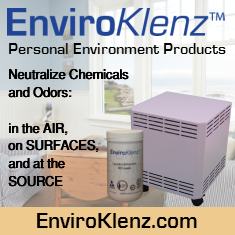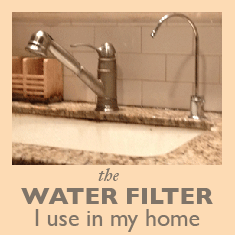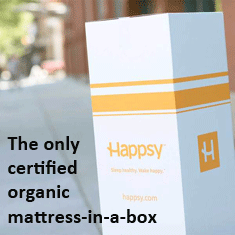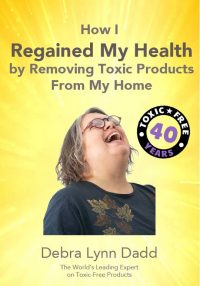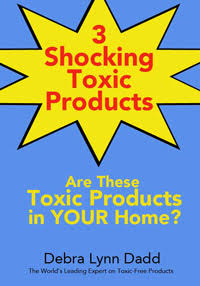
Water | Swimming Pools
Car Seat Cover
Question from Kristina
Any recommendations on non toxic seat covers for the car? Im seeing a lot of “p65” products which I didn’t even notice before
Lisa’s Answer
Here is a previous response to this question from Debra.
Flame Retardant-Free Furniture Is Better, but Is It Safe Enough?
Readers occasionally send me suggestions for furniture that they consider safe because they are free of flame retardants. Flame retardants are among the most harmful of chemicals found in traditional furniture but unfortunately, they are not the only chemicals of concern.
Fire retardants became common additives to polyurethane foam used in furniture in response to California flammability standard TB117 that was adopted in 1975. U.S. manufactures adopted the standard for products sold all over the country so that they would not have to have a separate inventory for California. Flame retardants have been linked to adverse health effects including cancer, lower IQ, learning disorders, hormone disruption and reduced fertility.
California revised their standard in 2014 to allow manufacturers to meet flammability requirements without chemical flame retardants. There are now hundreds of couches and other upholstered furniture options that don’t use harmful chemical flame retardants in their polyurethane foam. Keep in mind that these chemicals are not banned, they are just no longer required.
This is an important step in the right direction but it is not enough. There are many other chemicals of concern in traditional upholstered furniture.
Polyurethane Foam
Polyurethane foam is made by reacting polyols, a type of complex alcohol, and diisocyanates, which are a petroleum byproduct. The most common source of diiscyanate used in foam is TDI, or toluene diiscyanate. In its raw form TDI is a carcinogen. Once reacted it is inert but it can still offgas.1
There are many potential additives to polyurethane foam. Manufacturers often consider their additive ingredients proprietary and do not disclose them. Formaldehyde is not usually added to foam but it can be a byproduct of chemical reactions or from adhesives used on the foam.
Upholstered furniture such as sofas and reclining chairs can be a significant source of VOCs. One study tested a range of large furniture and appliances and found that the sofa emitted the highest level of VOCs.
Other Furniture Components
Treated Fabric
According to O Ecotextiles, all stain repellent finishes are based on fluorotelmer chemistry, which means it pertains to chemicals which become perfluorocarbons (PFCs) when released into the environment. There are newer stain repellent finishes that are claiming to be safer and less bioaccumulative. Though safer than older formulations, there is little human data to support just how safe they are.
Leather
Leather can be processed using hundreds of harmful substances including chromium, formaldehyde, phthalates and heavy metals.
Adhesives
Adhesives can contain solvents such a benzene, toluene, styrene or acetone.
Composite Wood
Particleboard, plywood, MDF are often sources of formaldehyde.
Stains
Stains and finishes can be sources of VOCs including acetone, methylene chlorine, benzene and toluene.
If you are looking for upholstered furniture that is safe and non-toxic, visit Debra’s List.
Removing Eye Glass Sanitizer
Question from Kendall
I have received a pair of eyeglass frames from Warby Parker (try at home option). I have multiple chemical sensitivities and can detect some kind of sanitizer/antibacterial residue on them–I imagine as a covid precaution. Do you have any recommendations for removing the sanitizer residue–I can smell and taste it.
Lisa’s Answer
Have you tried washing them with soap and water? Readers, do you have any other suggestions?
UVC Sanitizers
Question from Jesse
Curious if you could post thoughts on non toxic Coronavirus related home cleaning. Specifically, I’ve read conflicting reports about in home UVC air sanitizers and wands (particularly if they are safe to use around people, pets, kids).
Lisa’s Answer
The concerns around the technology is that they can cause harm to skin and eyes (much like sun damage) as well as emit dangerous ozone. Until there is research that shows definitively that these devices are safe, I would not use them. Additionally, they are not part of the recommended protocol by the EPA because the EPA has not evaluated them for effectiveness against the novel coronavirus.
Used Leather Sofa
Question from Michayla
We’re looking to buy a used leather sofa. This is one that was made by Executive Leather Inc “Manufacturer of quality leather furniture” (Hickory, NC). It was owned by the seller’s grandparents she believes maybe 10 years who then gave it to them who have currently had it for 7 years. The tag was hard to read but looks like the cushion is 90% urethane foam 10% polyester. Unfortunately, I can’t find anything online to get more information. Would you think this would be safe enough to own after ~17 years of offgassing? **After asking her husband he said it might be closer to 15-20 years old that the grandparents owned them. So between 17-27 years offgassed.
Lisa’s Answer
Unfortunately, upholstered furniture with polyurethane foam is not something that gets better as it gets older. Flame retardants were used in foam starting in the 1970’s so that couch most likely contains them. As the foam degrades over time the flame retardants end up in household dust. Additionally, formaldehyde, also a likely component, can off-gas indefinitely. Finally, leather is processed with hundreds of chemicals. I can’t say for sure if old leather is better or worse than new leather because I would have to understand each chemical used in the process.
Testing for Flame Retardants
Question from C.S.
Though I’m diligent, many items in our home still may have been treated with chemical flame retardants. How can I find out what is and what isn’t? Is there a way or place to have samples tested? My children want their prized stuffed animals back in their beds, and I really like my burlap bed skirt.
Lisa’s Answer
Unfortunately, I am not aware of home test that does this.
Duke University has a program that allows you to send in polyurethane foam from household mattresses and furniture to see if it has flame retardants.
Precautions
Question from Jayy
Hello, I am a D.J. that smoking is allowed in the night club I work at.. I recently had an drastic experience w/ Covid 19 with intubation of 24 days the whole works… After I was blessed to be released Dr. told me My lungs looks as if I was “SMOKER” Never been a smoker but have been expose to second hand smoke for yrs…
I needed to know if there a certain mask that I can wear when I report back to work….
Lisa’s Answer
Cigarette smoke is comprised of both particles and gas so you would need a mask that filters out both. EnviroKlenz makes a mask that does both but it is currently out of stock.
Readers any other suggestions?
Minimally Toxic Camping Gear
Question from Anna
I have been becoming sicker and sicker and am not sure if I will be able to tolerate living in society much longer. I have already been sleeping in a tent behind a house rather than in the house itself.
I think perhaps what I might need is a very long camping trip to get away from the toxic chemicals and the cell phones and the WiFi and all of it.
I was wondering if you might suggest a decent portable water filtration device (I was thinking Lifestraw, but I don’t know if there’s something better but still affordable), a low-toxicity sleeping bag that will still be fairly winter-proof, reasonably affordable wool or other non-cotton clothing that is at least free of naphthalene and paradichlorobenzene, a low-toxicity bivouac sac, minimally toxic boots, some sort of first aid kit appropriate for a chemically injured person, and some sort of non-plastic water bottle durable enough for hiking. I was reading that for winter hiking, you basically have to use an insulated stainless steel water bottle anyway, but maybe some of these are better than others. I was also wondering if you might have any suggestions on re-usable pads and/or period underwear.
Lisa’s Answer
I’m sorry you are having such a difficult time. For non-toxic clothing and shoes/boots you can look at Debra’s List or use the search button on the site to look up clothing. There are several articles and threads where readers have reported on clothing that is both non-toxic and tolerable. As always though, because everyone is different, what is tolerable to one person may not be to another.
Here is information on a lightweight wool sleeping bag that might work for you.
Here is some more information on Lifestraw. I have not done a full investigation of these type of filters so I can’t tell you about other options.
I use Kleen Kanteen for hiking because glass is not practical for this purpose. If you are sensitive to nickel you should not use stainless steel. Here is some more on using stainless steel for drinking.
You might want to consider reaching out to Debra for a paid consultation because you have many specific needs. She is available for paid consults until June 18, 2020.
Readers do you have any other suggestions?
Paint Smells a Month Later
Question from Dac
Lisa’s Answer
See below comments from Andy Pace of The Green Design Center.
Toxic Free Products in the UK
Question from Zara
I was really hoping for some help in that direction.
Lisa’s Answer
I am glad you are finding the site helpful! Unfortunately, I am not familiar with dishware from the UK. Readers, any suggestions?


